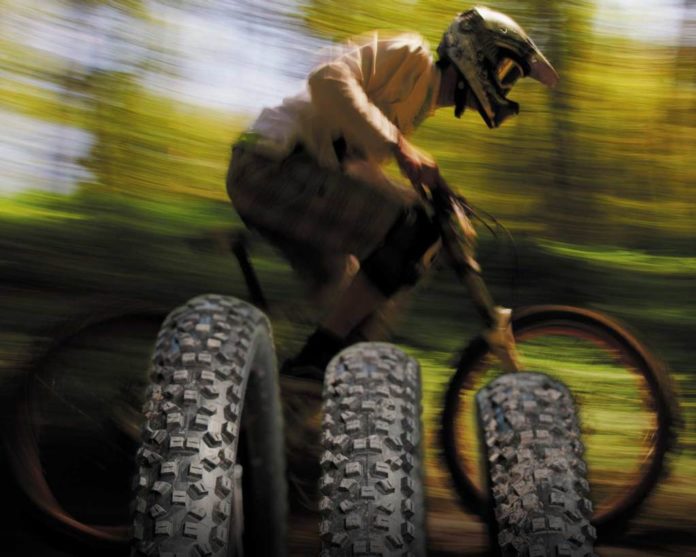The mountain bike industry has been known for it’s cutting edge innovations and shared technologies with motor-sport companies, NASA, the U.S. military, Boeing, and even formula 1. With innovation comes rapid change to existing products and how we define them. The mountain bike industry has seen many changes over the years but none of the changes have been as dramatic or as challenging as the wheel diameter and rim width offerings.
Being in the bike industry has helped some understand the changes and reason, but to the average consumer the choices and reasons smells a little fishy. Do we really need more then one wheel size or rim size in the industry? If so, why?
So here is a quick lay of the land in bike wheel sizes for those who are looking to play catch up.
Each of the wheel and rim combinations changes the way a bike will feel and ride. Each has a very specific ride quality and application as well as rider preference. There is no right or wrong wheel size in the mountain bike industry but there are a few philosophies around rider heights, ability, expectations, and riding destination that make the right wheel choice easier. The best way to figure out your wheel size of choice is to visit your local bike shop and have an educational conversation with one of the knowledgeable sales staff. By asking a few simple questions and getting your answers a wheel size or two will emerge as front-runners and a test ride or further questions maybe needed to pin it down.
Obviously wheel size is only one variable when choosing a new bike, we have suspension designs, category of mountain bike, part level, unisex or woman’s, and of course price point. For simplicity sake, we are going to focus in on a specific wheel size that I feel has the most versatility for all types of riders.
Bikes that fall into the 650+ category are by far some of the most versatile bikes on the market. Why is that? Well with the ability to swap between 29’’ and 650+ wheel and tire combinations, a rider can harness a vast number of mountain bike categories while owning 1 bike and 2 wheel sets. Most 650+ bikes on the market come with a modest amount of suspension travel 4-5 inches front and rear. They also tend to have more of a trail-riding type geometry, which makes them excellent at both going up and down. Couple the travel and angles with a wider 2.8’’ tire and you have a bike that instantly offers you more comfort, stability, safety and confidence.
Mountain bike wheel sizes explained
| 26’’ | Old School MTB Wheel size of new category of kid’s bikes bridging gap to 650. |
| 26’’ Plus | Very new / All mountain style riding with higher volume |
| 26” Fat | Fat bike wheel size on most fat bikes use 4-5’’ tires very high volume |
| 27.5” | MTB smaller adult wheel narrower rim 2’’-2.5’’ tire compatibility |
| 27.5” Plus | MTB middle wheel size wider rim 2.8-3.25’’ tires higher volume |
| 27.5’’ Fat | Fat bike wheel adopted by a few bike companies narrower rim than 26’’ fat |
| 3’’- 4’’ | Tire compatibility lower volume than 26’’ Fat |
| 29’’ | MTB taller wheel size narrower rim accommodates 2’’-2.5’’ tires low volume |
| 29’’ Plus | Tallest MTB wheel and tire combination with tire width 2.8’’-3.25’’ |










